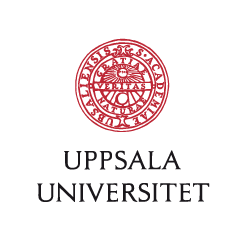 To communicate about genetic risk with patients, we need to know how people think about risk and that experts and people in general often think differently.
To communicate about genetic risk with patients, we need to know how people think about risk and that experts and people in general often think differently.
A common feature, however, is this: Risk has to do with future adverse events. We talk about the risk of getting sick. But we rarely talk about the risk of getting well. We must then imagine people who value their disease (perhaps to avoid enrollment in an occupation army).
The expert’s concept of risk presupposes the negative value, but does not delve into it. It focuses on the probability that the unwanted event will happen (and how certain/uncertain the probability is).
For patients, however, the value aspect probably is more in focus. A couple learning about a 25% risk of having a child with a certain disability probably considers how bad such impairment would be: for the child and themselves. Maybe it isn’t so bad? Perhaps there is no great “risk” at all! They evaluate the risk scenario rather than calculate the probability.
How can we understand this value aspect, which risk presupposes and patients ponder? Ulrik Kihlbom at CRB asks the question in an article in the Journal of Risk Research.
Kihlbom describes two common ways of understanding value. The first is in terms of preferences. People have different preferences. Most prefer health before sickness, but occasionally someone may prefer disease. Value lies in satisfying these preferences, whatever they are. There is then only one value: preference satisfaction. The problem is that we can object that these preferences are not always reasonable or well informed. Additionally, patients can adapt to their illness and prefer their lives as much as healthy persons prefer their lives. Is it valuable to satisfy even such preferences?
Not surprisingly, the other way of understanding value is more objective. Here one assumes that value depends on how well certain basic human capabilities are supported. Such as being able to use one’s senses, imagine, think, play, be healthy, etc. Here there is a more objective measure of value. The problem is the authority the measure is given. May not a person lack some of these capabilities and still live a full and dignified life? Who decides which capabilities should belong to the measure?
Actually, I would say that both proposals impose a measure of value. Preference satisfaction is, of course, a general measure too.
Kihlbom proposes a third way of understanding value. No measure of value is imposed and value is not separated from that which has value. If someone gets cancer, the negative value lies already in the disease, so to speak. A person who knows what cancer is does not ask: “Why is it bad to get cancer?” And hardly anybody would answer: “Because it frustrates my preferences” or “Because it prevents me from flourishing as a human being.”
Knowing what disease is means knowing that it is bad. It is part of the point of the word. To exclaim, “I’m so sick!” is to complain (not to rejoice). The value lies in the phenomenon itself and in the word. If some people still value their disease (perhaps to avoid military service), the value lies in the situation where the disease can appear as a good thing.
This is probably how people approach genetic risk information: What does this mean in my life? How bad is it? They immerse themselves in the value aspect, which the numerical probability presupposes. The 25-percent risk of having a child with a certain disability leads to concerns over what such a life might turn out to be like; how it can be described; how it can be valued.
So what should we keep in mind in genetic risk communication? The novelty about genetic risk information is not only that patients get difficult to interpret percentages of probability. The scenarios are new. These scenarios can involve time perspectives that extend throughout one’s future life, even to future generations. They can be about diseases and treatments that we do not know what it means to live with.
We evaluate risks daily (like the risk of missing the train), but here patients encounter novel risk scenarios that are difficult to evaluate. If I understand Kihlbom right, he thinks that the challenge is not only to explain probabilities to patients. The challenge is not least that of talking with patients about these new risk scenarios: about how they react to them in terms of value, how they describe them as “catastrophic” or “not so bad.”
Patients need support to evaluate genetic risk scenarios reasonably; not only to understand probabilities.
Pär Segerdahl
Kihlbom, U. 2016. “Genetic Risk and Value.” Journal of Risk Research, DOI: 10.1080 / 13669877.2016.1200653
This post in Swedish

 In a previous post, I tried to make the point that the pharmaceutical industry can support altruism between research participants and patients, despite the fact that the industry itself is not altruistic but is driven by profit. Medical research will not benefit patients, unless results are developed into commercially available treatments.
In a previous post, I tried to make the point that the pharmaceutical industry can support altruism between research participants and patients, despite the fact that the industry itself is not altruistic but is driven by profit. Medical research will not benefit patients, unless results are developed into commercially available treatments.


Recent Comments